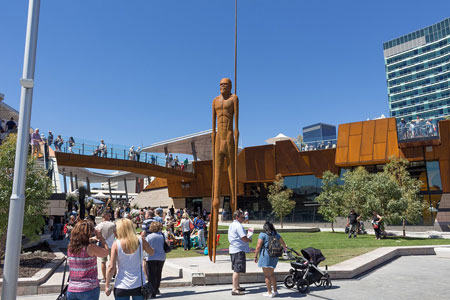Perth Translation Services » Spanish translator » Spanish Brochure Translation
Spanish Brochure Translation
Perth Translation Services provides Spanish brochure translations for businesses and government departments in Australia. As a professional translation services provider, we offer fast and quality Spanish brochure translations, and are able to typeset Spanish translations into existing design files.
We usually work with InDesign project folders shared by clients, and deliver multilingual brochures from a single brochure in English.
Working with local Spanish translators, designers and typesetters, you can be assured your project gets delivered by professionals familiar with the local culture and terminology used in Australia, and any project feedback gets addressed quickly.
Spanish Brochure Translators
Enquire with us today
Latest Testimonials


About the Spanish Language
The Spanish language is a Western Romance language that originated in the Castile region of Spain and today has hundreds of millions of native speakers in Latin America and Spain.
Beginning in the early 16th century, Spanish was taken to the colonies of the Spanish Empire, most notably to the Americas, as well as territories in Africa, Oceania and the Philippines. Around 75% of modern Spanish vocabulary is derived from Latin. Ancient Greek has also contributed substantially to Spanish vocabulary, especially through Latin, where it had a great impact.
The Spanish language evolved from Vulgar Latin, which was brought to the Iberian Peninsula by the Romans during the Second Punic War, beginning in 210 BC. Previously, several pre-Roman languages (also called Paleohispanic languages)—some related to Latin via Indo-European, and some that are not related at all—were spoken in the Iberian Peninsula. These languages included Basque (still spoken today), Iberian, Celtiberian and Gallaecian.
The first documents to show traces of what is today regarded as the precursor of modern Spanish are from the 9th century. Throughout the Middle Ages and into the modern era, the most important influences on the Spanish lexicon came from neighboring Romance languages—Mozarabic (Andalusi Romance), Navarro-Aragonese, Leonese, Catalan, Portuguese, Galician, Occitan, and later, French and Italian. Spanish also borrowed a considerable number of words from Arabic, as well as a minor influence from the Germanic Gothic language through the migration of tribes and a period of Visigoth rule in Iberia. In addition, many more words were borrowed from Latin through the influence of written language and the liturgical language of the Church. The loanwords were taken from both Classical Latin and Renaissance Latin, the form of Latin in use at that time.
According to the theories of Ramón Menéndez Pidal, local sociolects of Vulgar Latin evolved into Spanish, in the north of Iberia, in an area centered in the city of Burgos, and this dialect was later brought to the city of Toledo, where the written standard of Spanish was first developed, in the 13th century. In this formative stage, Spanish developed a strongly differing variant from its close cousin, Leonese, and, according to some authors, was distinguished by a heavy Basque influence (see Iberian Romance languages). This distinctive dialect spread to southern Spain with the advance of the Reconquista, and meanwhile gathered a sizable lexical influence from the Arabic of Al-Andalus, much of it indirectly, through the Romance Mozarabic dialects (some 4,000 Arabic-derived words, make up around 8% of the language today). The written standard for this new language was developed in the cities of Toledo, in the 13th to 16th centuries, and Madrid, from the 1570s.

